Trust DigitalXForce to deliver the visibility and control you need to stay ahead of evolving threats.
- Attack Surface Management & Asset Inventory
- Real-time, Continuous Integrated Risk Management
- Automated Audit & Compliance And Risk Assessment
- DigitalX Risk Quantification & Prioritization
- Automated DigitalX Posture Management
- Automated Security Blueprint Generator
- Automated Board Level Metrics & Report Generator
- Automated Cyber Insurance Application Processor
- DigitalX Risk Remediation Planner
- DigitalX Policy Reviewer & Generator
- DigitalX Security Management & Operations Plan Generator
- Third Party Risk Management
Attack Surface Management & Asset Inventory
What We Give You

Enhanced Visibility
Organizations gain better insight into their digital assets, including hardware, software, and network infrastructure, which allows them to manage and protect their environment more effectively.

Improved Security Posture
Identifying and tracking assets enables organizations to monitor and address vulnerabilities, misconfigurations, and potential threats more efficiently, which reduces the attack surface and improves overall security.

Risk Reduction
Attack Surface Management and Asset Inventory help organizations identify high-risk assets and prioritize their security efforts accordingly, leading to a more proactive approach to risk management and mitigation.

Streamlined Compliance
Understanding the entire IT environment and asset landscape helps organizations meet regulatory compliance requirements more efficiently. A comprehensive asset inventory can serve as evidence of due diligence and help demonstrate compliance during audits.

Efficient Resource Allocation
Organizations can allocate resources more effectively when they clearly understand their assets and attack surface and invest in the right security tools, personnel, and training to protect their environment.

Faster Incident Response
With a clear picture of the attack surface and asset inventory, organizations can respond to security incidents more quickly and accurately and minimize the impact of a breach and limit potential damages.

Better Decision-Making
Comprehensive Attack Surface Management and Asset Inventory data enable organizations to make more informed decisions about their cybersecurity strategy, such as investing in the right tools, creating targeted security policies, and developing a more effective incident response plan.
Real-time, Continuous Integrated Risk Management
Proactively identify and address potential threats, reduce the impact of security incidents, and ultimately build a more secure and resilient IT environment.
What We Give You

Continuous Monitoring
Regular tracking and analysis of the organization’s IT environment, including hardware, software, network infrastructure, and user activity, to identify potential threats and vulnerabilities.

Threat Intelligence
Gathering and analyzing information on known and emerging threats from various sources, such as threat feeds, security news, and industry reports to help organizations stay informed about the latest risks and adjust their security posture accordingly.

Real-time Risk Assessment
Evaluating the organization’s security risks continuously and dynamically, considering factors such as vulnerabilities, threat intelligence, and the potential impact on business operations to allow for a more accurate and up-to-date understanding of the risk landscape.

Automated Risk Mitigation
Implementing automated tools and processes to quickly respond to identified risks and vulnerabilities, such as automated patch management, intrusion detection and prevention systems, and security information and event management (SIEM) solutions.

Integration with Business Processes
Aligning cybersecurity risk management efforts with the organization’s business objectives and risk appetite to ensure effective risk mitigation strategies do not hinder the organization’s overall goals.

Data-driven Decision Making
Leveraging data analytics and machine learning to identify patterns, trends, and anomalies in the organization’s security data to help improve risk assessments, prioritize mitigation efforts, and enhance the overall security strategy.

Collaborative Approach
Collaboration between different teams within the organization, such as IT, security, and business units, to ensure a comprehensive understanding of the risk landscape and a unified approach to risk management.
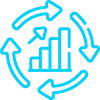
Continuous Improvement
Regular reviews and updates of risk management processes, policies, and tools to adapt to the ever-changing threat landscape and maintain an effective security posture.
Automated Audit & Compliance And Risk Assessment
Reduce the time and effort required to maintain compliance, enhance their risk management capabilities, and ultimately build a more secure and resilient IT environment.
What We Give You

Automated Data Collection
Tools to automate the process of gathering data from various sources, such as network devices, applications, and databases, which significantly reduces manual effort and human error.

Continuous Monitoring
Automated solutions to monitor the IT environment in real-time, allowing organizations to identify and address potential risks, vulnerabilities, and compliance gaps as they arise.

Centralized Dashboard
Enabling stakeholders to track progress, identify trends, and make data-driven decisions on a centralized dashboard with a holistic view of the organization’s risk and compliance posture.

Regulatory Mapping
Automated solutions map organizational policies and controls to specific regulations and industry standards, helping organizations demonstrate compliance during audits and ensure they meet their regulatory obligations.

Risk Scoring and Prioritization
Automated tools assess and score risks based on the likelihood of occurrence, potential impact, and the organization’s risk appetite to help organizations prioritize their risk mitigation efforts and allocate resources more effectively.

Automated Remediation
Offers automated remediation capabilities that identify and address compliance gaps and vulnerabilities, such as applying patches or reconfiguring systems to meet security requirements.

Reporting and Analytics
Generates detailed reports and analytics that help organizations track their compliance and risk management efforts, identify areas for improvement, and demonstrate due diligence to auditors and regulators.
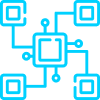
Integration with Other Systems
Integrate automated audit and compliance tools with other systems, such as governance, risk management, and compliance (GRC) platforms, security information and event management (SIEM) solutions, and incident response tools to streamline risk management and compliance processes across the entire IT environment.
DigitalX Risk Quantification & Prioritization
Make informed decisions on resource allocations and risk mitigation strategies to proactively address potential threats and minimize the effect on business operations.
What We Give You

Risk Identification
Identifies potential risks, including reviewing internal and external factors such as technology, processes, people, and environmental factors contributing to potential threats or vulnerabilities.

Risk Analysis
Analyzes each identified risk by assessing its likelihood (the probability of the risk occurring) and impact (the potential consequences). Factors considered for evaluating likelihood and impact include historical data, industry trends, expert opinions, and other relevant information.

Risk Quantification
Assigns a numerical value or score to each identified risk derived through implementing methodologies like risk matrices, risk scoring systems, or quantitative risk assessment models.

Risk Prioritization
Prioritizes risks based on quantified scores to address the most critical threat to the organization first.

Risk Tolerance and Appetite
Considers the organization’s risk tolerance (the amount of risk it accepts) and risk appetite (the level of risk it is willing to pursue) to ensure risk mitigation efforts align with its overall strategy and objectives.

Risk Mitigation
Develops and implements risk mitigation strategies for the prioritized risks, including risk avoidance, risk transfer, risk reduction, or risk acceptance, depending on the nature of the risk and the organization’s risk tolerance.

Monitor and Review
Continuous monitoring and review of the risks and the effectiveness of the risk mitigation strategies. Adjusts the risk quantification and prioritization process based on changes in the organization’s environment, risk landscape, or risk appetite.
Automated DigitalX Posture Management
Proactively identify and address potential security issues by reducing the likelihood of security incidents and minimizing the impact of any breaches that do occur.
What We Give You
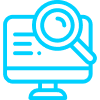
Continuous Monitoring
Implements automated tools to regularly scan and monitor the organization’s IT environment, including hardware, software, network infrastructure, and user activity, to identify potential vulnerabilities, misconfigurations, and other security gaps in real-time.

Automated Assessment
Leverages automated assessment tools, such as vulnerability scanners, configuration management tools, and security information and event management (SIEM) solutions, to evaluate the organization’s security posture against industry standards, best practices, and regulatory requirements.

Risk Quantification and Prioritization
Employs automation to quantify and prioritize risks based on their potential impact and likelihood of occurrence to help organizations focus their efforts and resources on the most critical security issues.

Automated Remediation
Implements automated tools and processes to address identified security gaps and vulnerabilities, like automated patch management, intrusion detection and prevention systems, and configuration management tools.

Policy Enforcement
Employs automated policy enforcement tools to consistently apply the organization’s security policies across the IT environment to prevent unauthorized access, data leakage, and other security incidents.
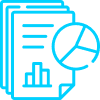
Reporting and Analytics
Leverages automated reporting and analytics tools to track the organization’s security posture over time, identify trends and patterns, and measure the effectiveness of security controls and processes.
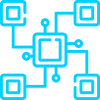
Integration with Other Systems
Integrates automated posture management tools with other security and IT management systems, such as governance, risk management, and compliance (GRC) platforms, incident response tools, and asset management solutions to streamline their security processes.
Automated Security Blueprint Generator
Design and implement an effective and tailored security strategy to improve overall security posture and maintain compliance with industry standards and regulations
What We Give You

Requirement Analysis
The generator collects information about the organization’s IT environment, business objectives, risk tolerance, and compliance requirements to create a tailored security blueprint.

Industry Standards & Best Practices
The tool incorporates industry standards, best practices, and regulatory requirements relevant to the organization’s industry and geographical location.

Customized Security Architecture
The generator creates a customized security architecture based on the organization’s requirements, including security controls, policies, and procedures.

Risk-based Prioritization
The tool prioritizes security initiatives based on the organization’s risk profile, ensuring that the most critical risks are addressed first.

Integration with Existing Infrastructure
The generator evaluates the organization’s IT infrastructure and security tools, ensuring the security blueprint integrates seamlessly with current systems and processes.

Automated Implementation
Offers automated implementation capabilities, helping organizations deploy recommended security controls and configurations more efficiently.

Continuous Monitoring & Improvement
Monitors the organization’s security posture and recommends updates to the security blueprint, ensuring the security strategy remains effective and up-to-date.

Reporting & Analytics
Automated security blueprint generators provide reporting and analytics, enabling organizations to track their security posture, measure the effectiveness of implemented controls, and demonstrate compliance with industry standards and regulations.
Automated Board Level Metrics & Report Generator
Equip your board members and executive leadership with information to make informed decisions on cybersecurity strategy, resource allocation, and risk management to build a more resilient IT environment
What We Give You

Data Aggregation
Tools collect and consolidate data from various sources across the organization, such as security tools, risk management systems, and IT infrastructure, to provide a comprehensive view of the organization’s security posture.

Customizable Metrics
Users select and customize matrices relevant to their organizational needs and risk profile, which includes risk scores, security incidents, regulatory compliance status, and key performance indicators (KPIs)

Automated Analysis
The tool automatically analyzes the collected data, identifying trends, patterns, and potential areas of concern helping the organizations track their progress, measure the effectiveness of their security controls, and identify areas for improvement.

Visualizations and Dashboards
Automated board-level report generators provide visual representations of the data, such as graphs, charts, and dashboards, making it easier for non-technical board members to understand the organization’s security posture.

Customizable Reporting Templates
Customizable templates are tailored to the needs of board members and executive leadership, ensuring that the reports are concise, relevant, and easy to understand.

Scheduled Report Generation
Tools are configured to generate reports automatically at regular intervals or on-demand, ensuring that decision-makers can always access up-to-date information.

Integration with Other Systems
Automated board-level metrics and report generators are integrated with other systems, such as governance, risk management, and compliance (GRC) platforms, security information and event management (SIEM) solutions, and risk assessment tools.
Automated Cyber Insurance Application Processor
Profit from a faster, more efficient application process, better coverage options and more competitive premiums with an automated cyber insurance application processor.
What We Give You

Data Collection
Tools gather relevant data such as business details, IT infrastructure, security controls, and historical cybersecurity incidents, which help insurers assess the applicant’s risk profile and determine appropriate coverage levels and premiums.

Automated Risk Assessment
The processor uses algorithms and machine learning to analyze the collected data, evaluating the applicant’s risk profile based on factors such as industry, size, IT infrastructure, security controls, and historical incidents.

Integration with Third-party Data Sources
Tools integrate with external data sources, such as threat intelligence feeds, vulnerability databases, and industry-specific risk data, to supplement the information provided by the applicant and enhance the risk assessment process.

Customizable Underwriting Rules
The processor allows insurers to customize their underwriting rules and criteria based on their specific risk appetite and underwriting guidelines, ensuring that the automated decisions align with the insurer’s overall business strategy and objectives.

Automated Policy Generation
The processor tracks the progress of each application, providing real-time status updates and notifications to both the applicant and the insurer.

Application Tracking & Status Updates
The processor tracks the progress of each application, providing real-time status updates and notifications to both the applicant and the insurer.

Reporting and Analytics
Automated cyber insurance application processors include reporting and analytics capabilities, enabling insurers to monitor trends, identify patterns, and make data-driven decisions about their cyber insurance offerings and underwriting processes.
DigitalX Risk Remediation Planner
Proactively address potential security risks and vulnerabilities, improving their overall security posture and reducing the likelihood of security incidents.
What We Give You

Risk Identification and Assessment
Integrates with various data sources, such as vulnerability scanners, asset management tools, and security information and event management (SIEM) solutions, to identify and assess potential risks and vulnerabilities in the organization’s IT environment.

Risk Quantification & Prioritization
Quantifies and prioritizes risks based on likelihood, potential impact, and the organization’s risk appetite using algorithms and customizable criteria to help organizations focus their efforts and resources on the most critical security issues.

Remediation Recommendations
Generates actionable recommendations for addressing identified risks, such as applying patches, implementing security controls, reconfiguring systems, or updating policies and procedures.

Customizable Risk Mitigation Strategies
Customizes risk mitigation strategies based on specific requirements, resource constraints, and risk tolerance, ensuring that the recommended actions align with the organization’s overall strategy and objectives.

Workflow Management
Helps organizations plan, assign, track, and manage remediation tasks, ensuring that risks are addressed promptly and efficiently with workflow management features

Integration with Other Systems
Integrates with other security and IT management tools, such as governance, risk management, compliance (GRC) platforms, incident response solutions, and project management systems to streamline risk remediation processes and maintain a comprehensive view of their IT environment.

Reporting and Analytics
Offers reporting and analytics to help organizations track their risk remediation progress, measure the effectiveness of their risk mitigation strategies, and identify areas for improvement.
DigitalX Policy Reviewer & Generator
Create and maintain a robust policy framework aligned with industry standards, best practices, and regulatory requirements.
What We Give You

Policy Templates
Offers a library of customizable policy templates based on industry standards, best practices, and regulatory requirements to create policies that are relevant, comprehensive, and compliant with applicable regulations.

Customizable Policy Creation
Creates and customizes policies based on the organization’s needs, risk profile, and compliance requirements to tailor policies to the organization’s unique environment and objectives.

Policy Review and Updates
Identifies outdated or non-compliant policies and any gaps or inconsistencies within the organization’s policy framework.

Policy Version Control & Tracking
Maintains an accurate and up-to-date record of policy history and tracks changes and updates over time with version control and tracking features

Integration with Other Systems
Integrates with security and IT management tools, such as governance, risk management, compliance (GRC) platforms, risk assessment solutions, and training and awareness programs to streamline policy management processes and comprehensively assess their security posture.

Workflow Management
Helps organizations plan, assign, track, and manage policy review and update tasks, ensuring that policies are maintained and updated in a timely and efficient manner.

Reporting and Analytics
Offers reporting and analytics to help organizations track their risk remediation progress, measure the effectiveness of their risk mitigation strategies, and identify areas for improvement.
DigitalX Security Management & Operations Plan Generator
Create and maintain a robust policy framework aligned with industry standards, best practices, and regulatory requirements.
What We Give You

Plan Templates
Offers a library of customizable plan templates based on industry standards, best practices, and regulatory requirements, such as NIST, ISO, and other frameworks.

Customizable Plan Creation
Creates and customizes plans based on the organization’s specific needs, risk profile, and compliance requirements to tailor plans to the organization’s unique environment and objectives.

Integration with Other Systems
Integrates with security and IT management tools, such as governance, risk management, compliance (GRC) platforms, risk assessment solutions, and asset management systems to streamline security management processes and maintain a comprehensive view of their security posture.

Workflow Management
Helps organizations plan, assign, track, and manage security management and operations tasks, ensuring that the plans are maintained and updated timely and efficiently.

Plan Version Control & Tracking
Offers version control and tracking, helping organizations maintain an accurate and up-to-date record of their plan history and track changes and updates over time.

Reporting & Analytics
Provides reports and analytics, enabling organizations to track their plan compliance status, measure their plans’ effectiveness, and identify improvement areas.

Continuous Improvement
Assists organizations in continuously refining and updating their security management and operations plans as their environment, threats, and business objectives evolve.
Third Party Risk Management
DigitalXForce Third Party Risk Management modules helps organizations identify, assess, and mitigate potential risks associated with their relationships with external vendors and partners.
What We Give You

Third Party / Supplier Inventory and Contracts:
DigitalXForce emphasizes the implementation of a centralized repository for tracking and managing all vendor-related data. This repository includes contracts, assessments, and performance metrics, ensuring that all information pertaining to third-party engagements is easily accessible and organized. By centralizing this data, DigitalXForce Solutions streamlines vendor management processes, enhances transparency, and facilitates informed decision-making.

Third Party Risk Assessment & Digital Trust Score:
Completed, on schedule, and overdue vendor risk assessments. Helps affirm the effectiveness of your TPRM processes, such as vendor vetting and selection. Also serves to keep stakeholders informed on where vendors are in the process and if there are any issues. Aggregated “Digital Trust” score for every third-party service provider and vendor based on the assessment of their cyber environment.

Third Party Benchmarking & Alerts:
Benchmarking of third-party service providers and vendors against standardized compliance frameworks and amongst one another. Alerts on issues exceeding risk thresholds, not just a general listing of all issues uncovered.

Third Party Risk Monitoring & Reporting:
Ongoing monitoring & reporting of compliance with downloadable detailed reports on all uncovered risks. Actionable risk plans are easily shared with third-party service providers and vendors using the collaboration.
 "Digital trust" cybersecurity solutions enabling automated, real-time risk mitigation are crucial for protecting organizations in today's threat landscape.
"Digital trust" cybersecurity solutions enabling automated, real-time risk mitigation are crucial for protecting organizations in today's threat landscape.